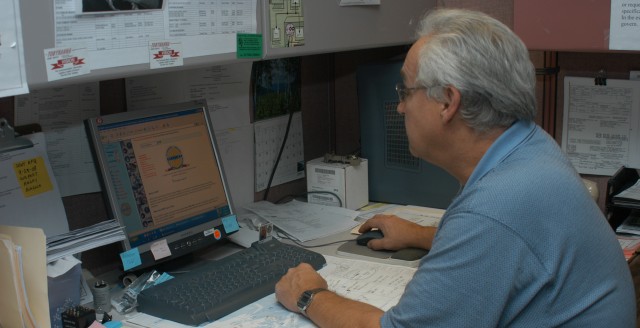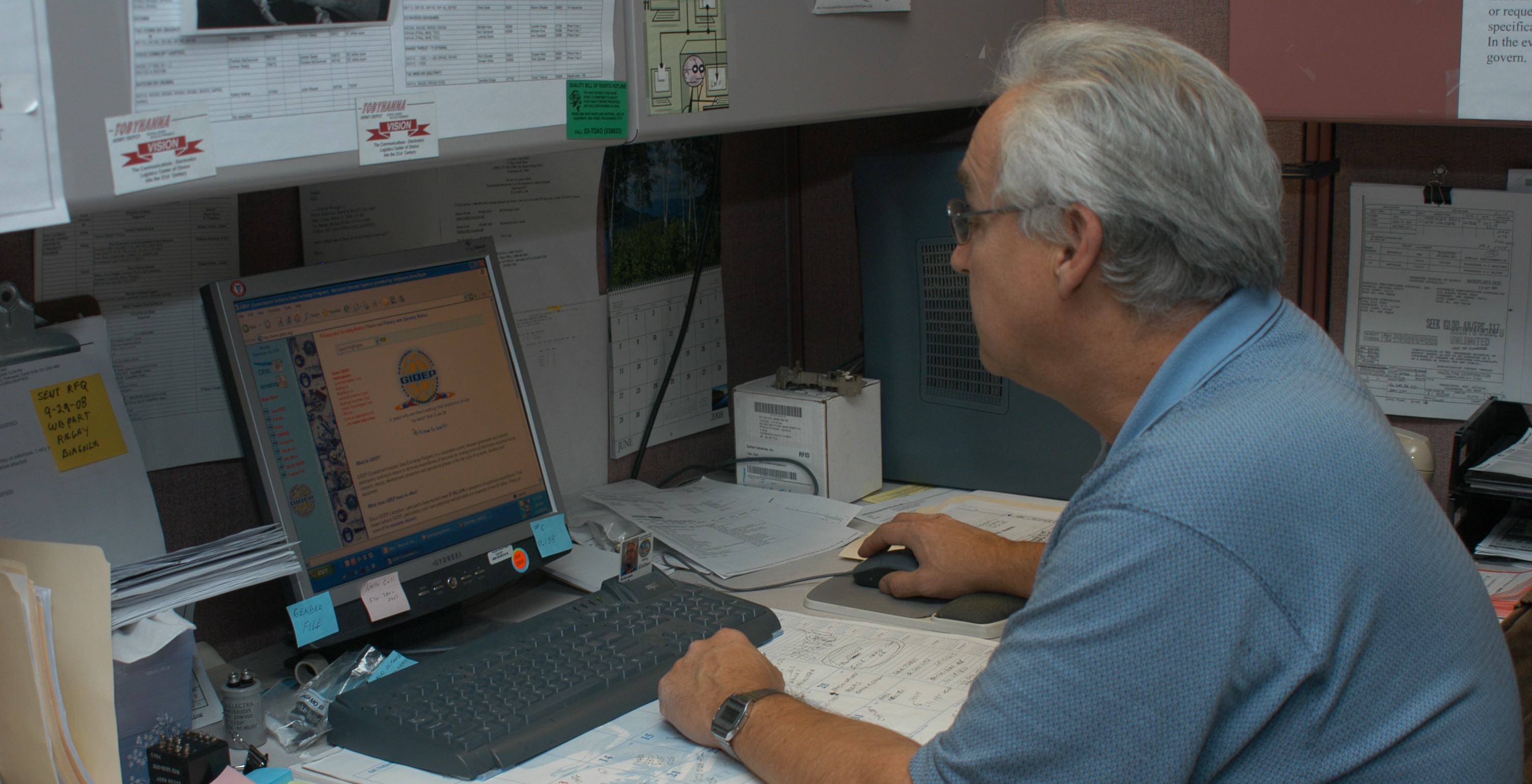TOBYHANNA ARMY DEPOT, Pa. -Tobyhanna personnel go to the ends of the Earth to find parts for older systems.
Many systems the depot repairs and tests, although effective, use older technology. Manufacturers stop making them, the technology is lost or upgrades render older systems difficult to repair.
To find parts as quickly as possible for these older systems (also called legacy systems), a team of depot employees was brought together in 2001 and has been finding parts ever since, often coming up with innovative solutions.
The team, called the Diminishing Manufacturing Support Cell, is currently staffed by Robert Wolak, cell supervisor; Nello Pauselli, DMS team lead; and equipment specialists Thomas Conserette, James Lavelle, David Rutkowski, Joe DeLong, Jim Dominick and Helen Wallace. The cell is based in the Production Engineering Directorate.
"Our mission, in a nutshell, is to provide cost-effective supply chain management to locate obsolete and difficult to find parts and materials," Pauselli said. "We locate stock from alternate sources in the government and commercial sectors, or we find a modified part that will do the same job as effectively as the original part. Our preference is to work with the OEMs (original equipment manufactures), but when that's not possible we have other options."
Normally, the Production Management Directorate orders parts and supplies. "They do a great job considering the thousands of items they order each day, but sometimes they can't find a part and that's where we come in," Lavelle said.
The mission originated in Army Materiel Command headquarters, where a material management cell was formed in response to growing workload from the Air Force for older electronics systems. Tobyhanna Army Depot formed its own material management cell in 1999 in the Production Management Directorate, which was transferred to Production Engineering in 2001 and renamed.
The team works with personnel from the Production Engineering, Production Management and Contracting directorates, and maintenance shops. They also use databases to find sources of supply and remanufacture of obsolete parts, such as the Defense Logistics Agency, Government-Industry Data Exchange Program, or GIDEP, the Joint Engineering Data Management Information Center, the Federal Logistics Information Service, Defense Microelectronics Activity (JEDMICS), Army Materiel Command Acquisition Centers. The team works with the Air Force Manufacturing Technical Assistance Production Program.
They also use what could be termed as 'nontraditional' methods.
"We had an AN/MPS-T1 (Radar Training System) that needed a tube that is part of the radio frequency components," DeLong said. "The tube we had was aluminum oxide that had a different effect on the frequency. The old tube was beryllium oxide, which did not have a negative effect on the frequency. We found them on the internet. They are made by [a foreign company] and they were half the cost of the new tubes."
Cavity oscillators used in Range Threat systems similar to radar training systems became difficult to find. For eight years, nobody could purchase new ones. "We did some detective work and found the original manufacturer in New Jersey," DeLong said. "The business had left for Kentucky and nobody knew about it. When we called, the owner [quipped] that he'd been waiting eight years to hear from us."
Lead free electronic components are another concern because they can cause "tin whiskering" to occur, which can cause electrical shorts. "We work with Process Engineering to check suspect components on the new X-Ray Florescence machine to eliminate Lead Free problems," Wallace said.
"We're also alert for any counterfeit parts that might surface and cause malfunctions."
Rutkowski noted that cell members only locate sources for parts. Their customers make the final decision and approval on possible solutions.
"What we're trying to do now is go from being reactive, finding parts to end production delays, to solving problems before production delays happen," Pauselli said.
To that end, cell personnel, working with the Productivity Improvement and Innovation Directorate, held a Lean Value Stream Analysis which resulted in the addition of an electronic form, AMSEL-TY Form 6203.
"It's titled Parts Assessment and Resolution and will be placed on the depot's intranet in the near future by the Information Management Directorate," Conserette said. "Anybody looking for a part can fill in the form. Parts issues will then become an Engineering Hotline and will be assigned tracking numbers where progress can be obtained by accessing the hotline. Once the hotline is resolved, all parties will be notified."
The hotline for the DMS Cell which is X5TECH.
Conserette said the intranet form will be announced as soon as it's online. Personnel can still e-mail or call cell members to alert them to parts problems or ask them to find a source.
"We noted that 10 to 15 percent of parts the depot needs are no longer available, and we've had about a 95 percent success rate in finding sources," Rutkowski said. "With the new form and finding sources that have or can make parts, were going for a 99 percent success rate."
Tobyhanna Army Depot is the largest full-service Command, Control, Communications, Computers, Intelligence, Surveillance, and Reconnaissance (C4ISR) maintenance and logistics support facility in the Department of Defense. Employees repair, overhaul and fabricate electronics systems and components, from tactical field radios to the ground terminals for the defense satellite communications network.
Tobyhanna's missions support all branches of the Armed Forces. The depot is the Army Center of Industrial and Technical Excellence for Communications-Electronics, Avionics, and Missile Guidance and Control Systems and the Air Force Technology Repair Center for ground communications and electronics.
About 5,700 personnel are employed at Tobyhanna, which is located in the Pocono Mountains of northeastern Pennsylvania.
Tobyhanna Army Depot is part of the U.S. Army CECOM Life Cycle Management Command. Headquartered at Fort Monmouth, N.J., the command's mission is to research, develop, acquire, field and sustain communications, command, control, computer, intelligence, electronic warfare and sensors capabilities for the Armed Forces.


Social Sharing